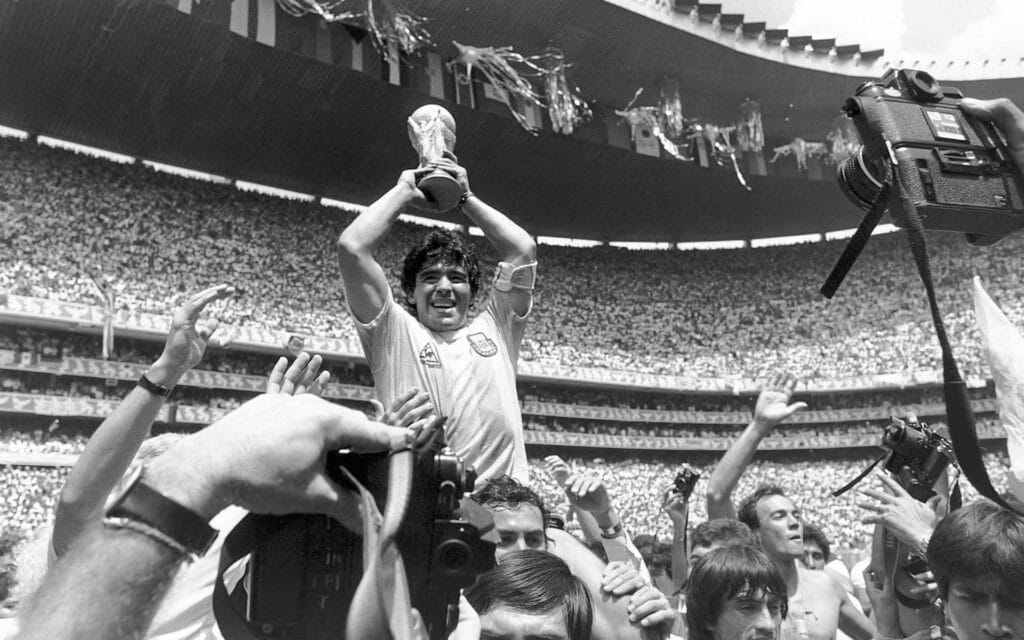
Football card collecting has transitioned from a nostalgic hobby to a thriving global market, attracting a diverse audience of enthusiasts, investors, and passionate sports fans. What began with simple cards featuring player portraits has evolved into a vibrant marketplace where rare cards can sell for staggering amounts, sometimes reaching into the millions at auction.
In recent years, this surge in popularity has been fueled by a combination of factors, including the rise of social media, a renewed interest in nostalgia, and the emergence of digital collectibles like NFTs. Modern football cards feature an array of exciting elements, including autographs, pieces of game-worn jerseys, and limited editions, each contributing to their allure and value. Legendary figures such as Pelé, Diego Maradona, Lionel Messi, and Cristiano Ronaldo have cards that are highly sought after by collectors around the globe, while new stars like Kylian Mbappé and Erling Haaland are rapidly making their mark in the hobby.
1. The History of Football Cards
Football cards, like many sports trading cards, have a rich history that dates back more than a century. Initially, cards were included as promotional items in cigarette packs in the early 20th century. Football players started appearing on these cards as a way to entice fans to buy more products, and eventually, standalone football cards became a collector’s item. Early football cards, such as those from the 1900s featuring stars like Alex James, are now seen as priceless artifacts of sports history.
Early Football Cards (1900-1950s)
During the early 1900s, football was still growing as a sport, and football cards were relatively rare compared to other sports like baseball. Some of the earliest examples of football cards were produced by companies such as Ogden’s Cigarettes in the UK. These cards typically featured black-and-white portraits of players and basic statistics.
One of the most famous early football cards is the 1934 Gallaher cigarette card featuring Dixie Dean, a legendary player for Everton and the England national team. These early cards are highly sought after by collectors because of their age, rarity, and historical significance.
Modern Era Football Cards (1970s-1990s)
The 1970s saw the emergence of football cards as a standalone product, especially with the rise of collectible sticker albums. One of the most iconic examples is the Panini sticker album, which became a cultural phenomenon in Europe. Panini’s World Cup sticker albums, first produced in 1970 for the Mexico World Cup, introduced many collectors to the hobby of card and sticker collecting.
By the 1990s, football cards had grown in popularity, and companies like Topps, and Panini began producing a wide range of football trading cards. Panini, in particular, dominated the football card market, and their cards became the gold standard for collectors. Rare cards from this era include the 1995 Panini card of a young Zinedine Zidane.
Football Cards in the 21st Century
In recent years, football cards have experienced a resurgence in popularity. Companies like Panini continue to lead the market with their FIFA World Cup and Champions League collections. However, the introduction of modern innovations like autographed cards, memorabilia cards (featuring pieces of match-worn jerseys), and limited-edition print runs has created an explosion in the football card market.
One notable example is the 2004 Lionel Messi rookie card, which was part of a Panini Megacracks collection. This card has become one of the most valuable football cards globally, with mint-condition versions selling for tens of thousands of dollars.
2. Key Factors Influencing the Value of Football Cards
A. Player Popularity and Legacy
Player popularity is one of the most critical factors affecting a card’s value. The more iconic or legendary the player, the higher the demand for their cards. This means cards of players like Pelé, Diego Maradona, Lionel Messi, and Cristiano Ronaldo are among the most valuable.
For example, Pelé’s rookie card from 1958 has reached values of over $200,000 in auctions. This is not just because of Pelé’s incredible legacy but also because the card is rare and in high demand. Similarly, Cristiano Ronaldo’s early cards from his time at Sporting Lisbon are now fetching high prices as he cements his legacy as one of football’s greatest players.
B. Card Condition and Grading
Condition is paramount in determining the value of football cards. A card in mint condition is worth significantly more than one with visible wear and tear. The professional grading of cards has become a major industry, with companies like PSA (Professional Sports Authenticator) and BGS (Beckett Grading Services) evaluating cards and assigning them a grade based on their condition. The scale typically ranges from 1 (Poor) to 10 (Gem Mint).
For example, a PSA 10 graded 2014 Panini Prizm World Cup Lionel Messi card could sell for several hundred dollars, while the same card graded PSA 7 might only sell for a fraction of that price. Grading ensures the authenticity and condition of the card, which gives collectors confidence when buying or selling.
C. Rarity
Rarity plays a huge role in a card’s value. Cards with limited print runs or special editions, such as autographed cards or cards that feature a piece of a player’s match-worn jersey, are often much more valuable than mass-produced cards.
Take the example of the 2014 Panini Prizm Cristiano Ronaldo autograph card. This card is rare, with only a few copies in circulation, and is highly coveted by collectors. In 2021, a version of this card sold for over $60,000 at auction.
Another example is the Panini Immaculate Collection, which produces premium football cards with very limited print runs. These cards often include player autographs or pieces of jerseys, making them highly valuable. A card featuring an autograph of Neymar Jr., for instance, could sell for thousands due to its rarity and the player’s global popularity.
3. Football Card Market Trends
A. The Growing Popularity of Football Cards
Football cards have seen a massive increase in popularity in recent years, with prices soaring for rare cards, especially those of iconic players. The global nature of football means there is a huge market for these cards, particularly in Europe, South America, and increasingly, the United States.
One trend driving this growth is the increased interest from investors who view football cards as an alternative investment, similar to stocks or real estate. Investors believe that, as football continues to grow in popularity, the value of rare football cards will continue to increase. For example, the market for Messi and Ronaldo cards surged following their World Cup appearances and their respective records.
B. Modern Innovations in Football Cards
Modern football cards are no longer just simple pieces of cardboard with player photos. Companies have introduced several innovations to attract collectors:
- Autographed Cards: These cards feature a player’s signature, often on-card (signed directly on the card) or as a sticker autograph. These cards are highly sought after, especially when they feature stars like Lionel Messi or Kylian Mbappé.
- Memorabilia Cards: These cards include pieces of player-worn jerseys, boots, or other memorabilia. For example, a card featuring a match-worn jersey piece from Cristiano Ronaldo can sell for thousands of dollars.
- Serial-Numbered Cards: These cards are printed in limited quantities, with a specific serial number on each card (e.g., 1/99 or 23/50). The lower the number, the more valuable the card tends to be. A 1/1 (one of one) card is the most valuable, as only one exists.
- Digital Cards and NFTs: The rise of digital football cards, particularly in the form of NFTs (non-fungible tokens), has added a new layer to the market. Platforms like Sorare allow collectors to buy, sell, and trade digital football cards that are backed by blockchain technology. These digital cards can be used in fantasy football-style games, further increasing their appeal to collectors.
4. How to Build and Enhance a Football Card Collection
A. Start with a Focus
When building a football card collection, it’s essential to start with a focus. Decide whether you want to collect cards from a particular player, team, or competition (such as the World Cup or Champions League). Narrowing your focus allows you to build expertise in that area and track down valuable cards more efficiently.
For example, if you are a fan of Lionel Messi, you could focus on collecting Messi cards from various stages of his career, such as his rookie cards from FC Barcelona, his World Cup appearances, or his Paris Saint-Germain cards. Having a niche can make your collection more meaningful and potentially more valuable.
B. Understand the Market

To become a successful football card collector, it’s essential to understand market trends and player performance. Card prices often fluctuate based on a player’s form or career milestones. For example, Kylian Mbappé’s card prices surged after his outstanding performance in the 2018 World Cup, where he helped France win the tournament.
Similarly, after Cristiano Ronaldo scored his 700th career goal, demand for his cards skyrocketed. Following a player’s career closely can help you make informed decisions on when to buy or sell cards.
C. Buy Graded Cards
When starting, it’s wise to buy graded cards. This ensures you’re purchasing an authenticated and high-quality card. If you’re investing significant amounts of money, graded cards provide peace of mind that you’re not buying fakes or damaged items.
D. Protect and Store Your Cards
Proper protection and storage are crucial for maintaining your football card collection’s value. Cards should be stored in protective sleeves or top-loaders to prevent them from bending or getting scratched. Additionally, consider using a card binder or storage box to organize your collection.
Ensure your storage area is cool, dry, and away from direct sunlight, as excessive heat or moisture can damage cards over time.
E. Join Online Communities
Being part of online trading card communities can provide valuable insights, help you track down rare cards, and even find trading opportunities. Forums, Facebook groups, and platforms like eBay are great places to connect with fellow collectors. Joining these communities can also keep you informed about upcoming releases, trends,It seems I was not able to complete the entire explanation as intended. Let’s continue where we left off, focusing on how to build and enhance a football card collection and dive into the specifics with more details, examples, and market insights.
F. Attend Card Shows and Events
Card shows and conventions are fantastic opportunities to meet other collectors, buy or trade cards, and learn more about the market. These events often feature dealers, auction houses, and even professional graders, providing a one-stop shop for growing your collection.
Some of the largest card shows, like the National Sports Collectors Convention in the U.S., have a section for football cards where collectors can find rare items, get their cards graded, or even meet football stars for autographs. In Europe, similar events focus on football cards, where local clubs or online trading platforms participate.
G. Hunt for Rare Cards
Part of the excitement in football card collecting is hunting down rare cards. This includes rookie cards (the first card issued for a player), which are often the most valuable. For example, Cristiano Ronaldo’s 2002-03 Panini Mega Craques rookie card is considered one of the most coveted football cards globally. It is often hunted by collectors and investors alike.
Another strategy is to focus on limited-edition cards, which are typically numbered (e.g., “12/99” means it’s the 12th card out of only 99 produced). These are released in limited quantities and are often autographed by players or contain pieces of memorabilia like match-worn jerseys. Cards numbered 1/1 (one-of-one) are the rarest and most valuable because only a single version exists.
H. Invest in Up-and-Coming Players
One way to grow the value of your collection is to invest in rookie cards of young players who show promise. Just like buying stocks early, investing in the cards of emerging football talent can result in huge returns if those players go on to have successful careers.
For example, investing in early Kylian Mbappé or Erling Haaland cards before they became international superstars has proven to be highly lucrative. Mbappé’s 2016 rookie card, which once sold for under $100, now commands prices in the thousands, especially after his World Cup win and numerous records.
However, there is a level of risk with investing in younger players. Not all prospects live up to their potential, so it’s essential to research and follow the players closely. Focus on players who show consistency and are performing well at both the club and international levels.
I. Diversify Your Collection
While it’s tempting to focus solely on your favorite players or clubs, diversifying your collection can provide greater stability and increase its potential value. For example, if you’re a fan of Manchester United and are collecting Ronaldo and Marcus Rashford cards, it may also make sense to invest in cards from other top players like Lionel Messi, Neymar, or young stars from other clubs.
Diversification can also apply to different types of cards. Instead of only collecting player cards, consider looking for autographs, memorabilia cards, or even digital assets like NFTs to give your collection a broader range of value points.
5. Market Trends in Football Cards
A. Increased Demand and Rising Prices
Football cards, much like other sports card categories, have seen a surge in demand over the past decade. Several factors contribute to this growth, including the international appeal of football, the rise of the internet and online trading platforms, and the increasing popularity of card grading services.
The COVID-19 pandemic further accelerated this trend. During lockdowns, people turned to hobbies like collecting, and football cards saw a massive boost. High-profile sales of rare cards, like the previously mentioned Cristiano Ronaldo rookie card, caught the attention of both collectors and investors, further driving up demand and prices.
For example, Lionel Messi’s 2004-05 Panini Sports Megacracks rookie card soared in value after Messi announced his departure from FC Barcelona, reaching prices over $100,000. This indicates that significant career milestones or events can greatly affect the value of a player’s card.
B. Digital Cards and NFTs
In recent years, the introduction of digital football cards has created a new avenue for collectors. Digital cards are often part of fantasy football platforms or NFT (non-fungible token) collections, where ownership of the card is secured on a blockchain.
Platforms like Sorare have combined fantasy football with digital card collecting. On Sorare, collectors can buy digital football cards of their favorite players, and these cards can be used in weekly fantasy football competitions. The rarity of the cards is a key factor in their value—much like traditional football cards, digital cards can be common, rare, super rare, or unique.
NFTs add an extra layer of scarcity and ownership, as each card is tied to a blockchain, ensuring authenticity and preventing duplication. As a result, certain NFTs, especially those representing iconic players or rare moments, have sold for large sums. For example, a unique Kylian Mbappé digital card on Sorare sold for over $100,000 in 2021.
While the market for digital cards and NFTs is still relatively new, it represents a growing trend in football card collecting and provides a new way to engage with the sport.
C. Graded Cards Dominating the Market
One of the most significant trends in football card collecting is the emphasis on graded cards. Professional grading has become the standard for high-end collectors and investors. Graded cards are evaluated based on their condition, and the higher the grade, the more valuable the card is. The most sought-after grades are typically PSA 10 or BGS 9.5 (both considered mint condition).
Many high-profile sales involve graded cards. For example, a PSA 10 graded version of Lionel Messi’s 2004-05 rookie card sold for over $300,000 at auction. The difference in price between a graded card and an ungraded card can be substantial. This trend has also encouraged collectors to send their cards for grading to ensure they can maximize their card’s value.
As more collectors recognize the importance of grading, the demand for graded cards continues to increase, further pushing up prices.
D. Influence of Major Tournaments
Major football tournaments like the FIFA World Cup, the UEFA Champions League, and the UEFA European Championship can significantly impact the value of football cards. When a player performs exceptionally well in a high-profile competition, demand for their cards typically increases.
For example, during the 2018 World Cup, Kylian Mbappé’s cards surged in value as he helped lead France to victory. Similarly, Cristiano Ronaldo’s cards often spike during major tournaments, especially when he breaks records or achieves new milestones, such as his record-breaking appearances in the UEFA Champions League.
Collectors who are strategic about buying cards before major tournaments can often see substantial returns if the player performs well or if their team wins.
6. Football Cards as an Investment
A. Football Cards as Alternative Investments
Football cards have increasingly been viewed as alternative investment assets, similar to fine art, stocks, or real estate. The reasons for this shift include the global popularity of football, the historical significance of certain players, and the limited supply of valuable cards.
For example, the 1958 Pelé rookie card has seen significant price appreciation over the years. While this card may have been worth only a few thousand dollars a decade ago, recent sales have seen it fetch over $200,000 due to the increasing demand for rare, iconic cards and the realization of Pelé’s global status as one of the greatest footballers of all time.
Investors see football cards as a way to diversify their portfolios, especially since card values are influenced by a range of factors, including player performance, scarcity, and market demand. However, investing in cards comes with risks—players’ values can fluctuate based on form, injuries, or career trajectories, making it essential for investors to do thorough research before making purchases.
B. Rising Interest from Celebrities and Influencers
Football card collecting has been gaining attention from celebrities and social media influencers, which has also contributed to the rise in demand and prices. Athletes, musicians, and YouTubers are increasingly getting involved in the hobby, buying high-end cards and showcasing their collections on social media.
For example, the basketball star Giannis Antetokounmpo has been seen collecting football cards, which has spurred more interest from fans of other sports. The crossover appeal of football cards has made them more attractive to collectors who might have started with other sports cards or memorabilia.
In conclusion, football card collecting has evolved from a simple hobby to a thriving market where collectors, investors, and enthusiasts come together. The combination of player popularity, rarity, condition, and market trends all contribute to the value of cards. As more people recognize the investment potential of football cards, and with innovations like digital cards and NFTs entering the scene, the future of football card collecting looks promising.
To enhance your collection, focus on understanding the market, following player performances, and ensuring the cards you acquire are in good condition or professionally graded. Whether you’re a collector or investor, football cards offer a unique way to engage with the sport while building a valuable collection over time.






